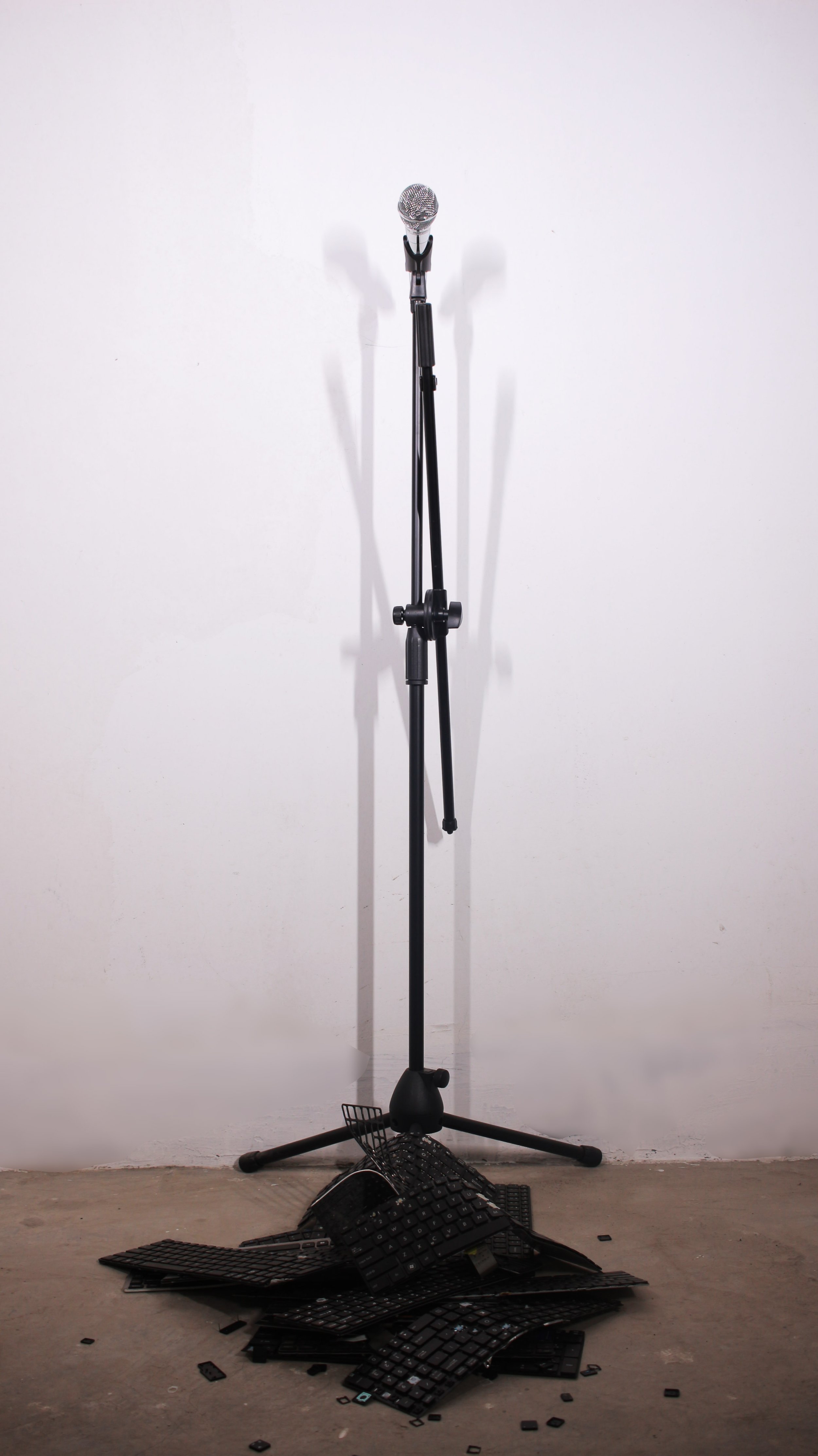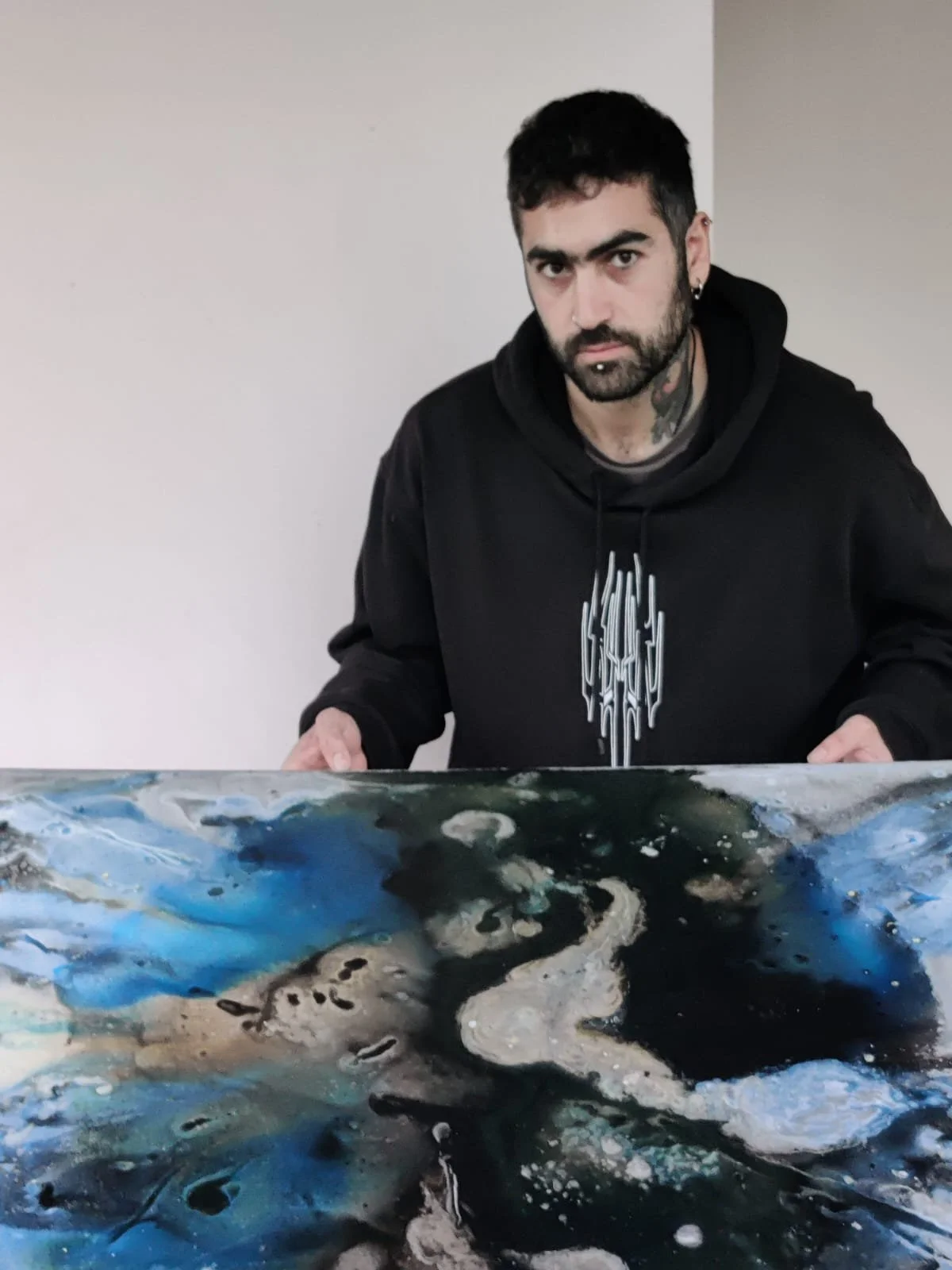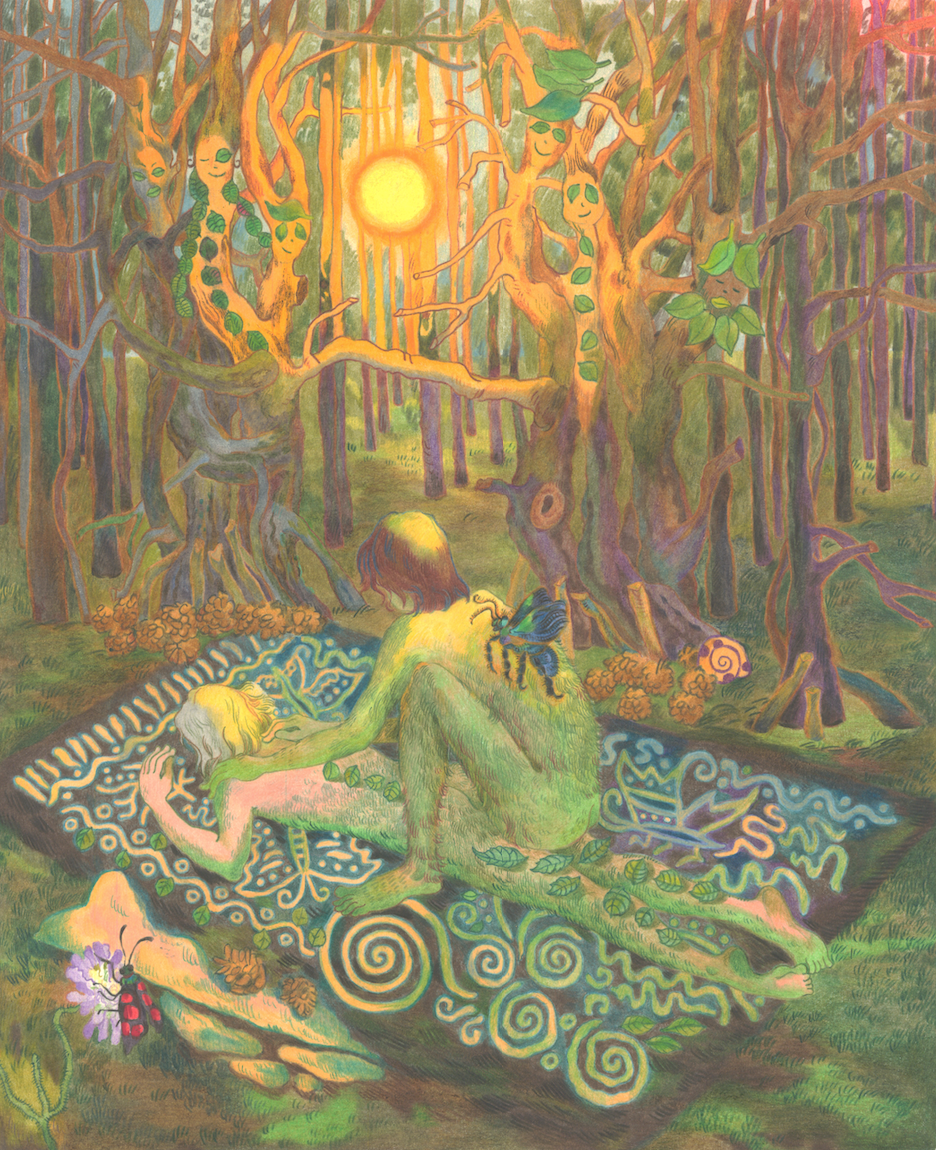10 Questions with Jingyi Chen
Jingyi Chen, born in 1997 in China, is an innovative digital artist and designer whose work critically engages with contemporary digital themes. With a solid education in sculpture from the China Academy of Art and an MFA in Computational Arts from Goldsmiths, University of London, Jingyi's portfolio is a testament to her ability to blend traditional artistry with modern technological insights. Her art, inspired by postmodernism and new media theories, navigates the complexities of cyborg identities, surveillance capitalism, algorithmic bias, and feminism.
Jingyi has exhibited her work in the UK, China, Korea, and on several online platforms, using XR, AI, and generative art to challenge societal norms and advocate for a future where digital landscapes are inclusive and equitable.
In addition to his artistic practice, Jingyi has been a talented digital designer, working for several prestigious international organisations like Deloitte, UN and etc., exploring the boundaries of contemporary digital practice.
Jingyi's accolades, including the CSC Art Program and the Government Scholarship of Zhejiang Province, underscore her contributions to the field of digital art.
Jingyi Chen - Portrait
ARTIST STATEMENT
Jingyi's work is a profound meditation on the digital zeitgeist, exploring themes of cyborg identities, surveillance platforms, algorithmic bias, and feminism through the prisms of Foucault's dissections of power and Donna Haraway's cyborg theory. Her work, steeped in the contemporary discourses of the Internet age, uses the latest in XR, AI, and generative art to question and dismantle the binary constructs of human-machine, nature-technology, and male-female. Inspired by Haraway's vision of a post-gender world, Jingyi's art interrogates the roles that technology plays in shaping our perceptions and interactions while drawing from Foucault's ideas on the mechanisms of control exerted through societal structures. In this digital-cosmic theater, she invites viewers to navigate the blurred lines between the organic and the artificial, urging a critical reflection on the impact of the digital world on our lives and advocating for a future where equality and inclusivity are coded into the very algorithms that permeate our existence.
Group, Sculpture, 1.3 m, 2018 © Jingyi Chen
INTERVIEW
First of all, introduce yourself to our public. Who are you, and how did you develop into the artist you are today? What experiences and training helped you develop your art practice
First of all I must thank Al-Tiba9 for giving me this opportunity to present my experiences and ideas in front of the audience.
I am an artist from Zhejiang, China, who has studied and worked in London for many years. I have been deeply interested in human culture since I was a child, including cosmology, mysticism, religion, and philosophy. I am also curious about the latest scientific and technological achievements, such as artificial intelligence and mixed reality. This is due to the fact that I didn't have electronic devices when I was a child. I could only imagine the world through thick historical books and encyclopedias. My parents bought me a telescope, and I was able to observe the stars at night. This way, I can have infinite reveries under limited conditions. In addition, I have studied painting since I was six. By chance, I was admitted to the China Academy of Art and its affiliate high school and received training in fine art theory and practice. This is how I started my professional art practice.
Beyond your artistic endeavors, you've also worked as a digital designer for prestigious international organizations like Deloitte and the UN. How does your experience in the professional digital landscape influence your artistic practice, if at all?
I think working professionally in different industries has greatly improved my soft skills and vision, allowing me to think about the world from different perspectives, which will enrich the connotation of my artistic creation. Because I like to explore the world with curiosity, I don't like to stay in a studio alone. By working with the world's top designers, I not only learned professional skills from them but also their worldview and way of doing things. I like to establish connections with local artists and designers because professional knowledge is changing so fast now, and we need a social network to exchange the latest information at all times. Professional work also made me realize the value of creative time and resources and stimulated me to create my own art.
Field Of Vision II, Sculpture, 40x40x20 cm, 2018 © Jingyi Chen
Field Of Vision II, 2018 © Jingyi Chen
Your portfolio showcases a blend of XR, AI, and generative art. How did you get interested in these mediums? And how do you keep up to date with the most recent innovations?
When I was studying sculpture as an undergraduate, the school gave me great tolerance and a lot of time to develop my own interests. As a result, I learned some programming on my own under the influence of computer trends. I feel a great sense of accomplishment in compiling a program that can run, and I have created some works related to the mobile era, such as Group (2018) and a series of Field of Vision (2018), which reflect some of my thoughts on the current society, such as the society monitored by big data and the changes in our vision caused by mobile phones. Later, I participated in the Master of Computational Arts program at Goldsmiths, where I received professional training in the development of XR and creative coding, as well as other art and technology techniques. After graduation, I chose the technology consulting industry because I could be exposed to various industries and keep updated with the latest technological information. We will use XR in some projects, and we will also conduct technical exchanges internally in hackathons. In my spare time, I also always listen to technology industry blogs and watch related videos. Other people may pay more attention to the new services and products brought by AI for now, but new technologies will definitely bring about artistic innovation, and it is not easy to follow the trend all the time.
Your work challenges societal norms and advocates for inclusive digital landscapes. Can you elaborate on how technologies empower you to express your artistic vision and drive your message forward?
Starting from my own identity as a female artist from Asia, I have been subjected to certain societal norms during my upbringing. No one can exist outside of society. However critical thinking and art education have made me particularly sensitive to the aspect of accepting discourse and dogma, so I always reflect on all the information I receive. The natural world contains infinite information and is free, whereas discourse is constrained and manipulated by power. Surveillance capitalism, supported by big data, has created information cocoons for everyone in the information age, so breaking free from screen addiction and information cocoons is my daily endeavour. Technology deepens biases to an extent because technological delivery is based on symbolic systems, and these systems, developed over thousands of years, embed biases and limitations deep into the collective subconscious. Reflections on power and discourse in the information age are manifested in my work 'Discourse' (2018). In 'Impotent Justice' (2021), using facial gender recognition technology to erase the face of the sculpture of the Goddess of Justice implies how power in charge uses technology to distort the history of women. In my VR work 'Nv Wa' (2021), by reimagining the power of the ancient Chinese goddess Nüwa in the dreams of a little girl and resurrecting the mechanical goddess Nüwa in a future era, I hope technology can empower women to pursue freedom and knowledge with more strength.
NvWa, VR, 2021 © Jingyi Chen
Nature Simulation, 2023 © Jingyi Chen
In your statement, you mention interrogating technology's roles in shaping perceptions and interactions, particularly in a post-gender world. How do you envision technology facilitating societal change and promoting equality and inclusivity in the digital age?
In ancient times, people created illusions and sought transcendental experiences through various means, such as self-flagellation, fasting, and the construction of magnificent churches. Today, all imaginations of the distant are shattered by videos and worship of the divine is replaced by worship of technology. One can easily find experiences detached from everyday life online, experiencing in games and VR what seems more real than illusions. The last trace of anticipation for the mysterious is stripped from people's minds, and emotions are manipulated by social media. Though it may seem like being lost in the ocean of free information, finding a precious, genuine island is not easy. I hope that artistic technology does not merely create beautiful illusions; artists should question the impact of technology on society, awaken audiences from information intoxication, encourage reflection on their surroundings, and, with the help of technology, pursue what they truly aspire to.
Your statement also mentions Foucault's dissections of power and Donna Haraway's cyborg theory. How do you translate these theoretical frameworks into tangible visual narratives within your art?
When creating 'Group' (2018) and 'Discourse' (2018), I had not yet read Foucault's books. Later, I was pleasantly surprised to discover the circular monitor structure in 'Group,' which coincides with Foucault's concept of the 'panopticon.' This concept reflects my reflections on the lack of privacy in Chinese society under big data surveillance. 'Discourse' also embodies my experiences of social media battles, illustrating the power of guiding discourse and the insignificance of individual discourse. I believe that those who are sensitive and reflective will easily find Foucault's theories of power and discourse everywhere in society. Through reading social criticism and philosophy, standing on the shoulders of thinkers is a shortcut to understanding the world and elevating the artistic realm of thought. These theories and insights, like crystal prisms, refract ordinary reality into rainbows. In the 'Cyborg Manifesto,' Donna Haraway opposed binary opposition, which can be traced back to ancient Greek philosophy and has long had a profound impact on people's worldviews. The cyborg symbolizes the fusion of binaries, the opposition to tradition, and the symbol of technology driving new fusion to create new realities. Influenced by her, I created the VR work' Nv Wa' (2021). Nüwa is a goddess who combines women and snakes. This work is a confusion of goddesses and girls, gods and robots, ancient myths and the future. Using technology, female artists can and should establish the legitimacy and divinity of women in the worlds of technology and art or for every identity.
Beyond the realm of art, are there any other fields or disciplines that inspire you or influence your creative process?
As I mentioned earlier, I have worked in the technology industry, observing societal and business operations. My work in designing user experiences for technology products is intertwined with my observations of people and psychology. I also keep a close eye on the awe-inspiring developments in new technologies and artificial intelligence and their impact on society. Virtual reality and interactive art are important means of expression for me. Additionally, I have a passion for reading various texts, especially postmodern critical theory. Recently, my interests have shifted towards religious experiences and classical mysticism. I also love travelling and experiencing different cultures and landscapes. Reflecting quietly in nature and walking alone in unfamiliar scenery are all ways that inspire my creativity.
Field Of Vision I, Sculpture, 2x3.8 m, 2018 © Jingyi Chen
Discorse, 2018 © Jingyi Chen
As an artist who has exhibited internationally and online, how do you adapt your work to different exhibition platforms and audiences?
From painting to sculpture to contemporary art to computer art, my artistic journey has been extensive, and I have created many works in different mediums. Contemporary art pieces can be cumbersome, some taking up three meters of space and requiring on-site assembly, while others involve complex circuitry and transportation logistics. VR artworks require designing user interfaces in different languages and for different operating systems, ensuring that audiences can properly use VR equipment on-site and complete the experience, akin to completing a game level. Interactive art, such as interactive walls, requires collaboration with professionals to set up laser radars and other receivers, with the artist monitoring the equipment's proper functioning. In addition to hardware, due to the rapid pace of technological development, computer languages and software are constantly evolving, necessitating timely updates and maintenance of code.
Furthermore, cultural literacy and background can hinder the audience's understanding of artworks. Contemporary art, with its emphasis on specific symbol systems, can be difficult for the general audience to comprehend. Works that prioritize creating visually appealing aesthetics are more likely to be popular on social media. Adapting to exhibitions requires consideration of specific platforms, exhibition themes, and target audiences.
Recently, we have witnessed the rise of AI and AI-led technologies, as well as AI-generated art. This has raised a number of questions. What is your stand on this matter? What do you think we will see in the future? Do you feel threatened as an artist by AI?
The tide of AI is inevitable, and I believe artists should actively embrace new technologies. AI has greatly facilitated my life and work. The trend of historical development is that things people valued in the past, such as beautiful clothes, jewelry, visual aesthetics, wonderful experiences, and the feeling of quickly achieving goals and dopamine secretion, are becoming increasingly accessible. As a result, the pursuit of goals is lost, inertia becomes heavier, and people become less willing to move or think. It's as Aldous Huxley predicted in "Brave New World," where everyone is immersed in the pleasure brought by electronic opiates. Art is a means of reflection for both the artist and the audience. In the quiet room, creating is a meditation on introspection. Every artist should consider: What will I paint on the canvas? What kind of artwork represents me? What kind of artwork do I write my name on? So even if AI can produce many beautiful pictures in one second, thinking is the artist's business. For digital artists, AI can solve some coding problems, so it is a powerful tool.
Nebula, Digital, 2023 © Jingyi Chen
Lastly, speaking of the future, what future projects or themes are you currently exploring in your artwork, and how do you envision your artistic practice evolving in the coming years?
Recently, I took a trip to Iceland, where the glaciers and volcanoes left me awestruck. I want to capture the purity and timelessness of the world's edge in my artwork, which differentiates from the serene mountains and starry skies that I have always admired, which can be seen in 'Nature Simulation' (2023). Additionally, I have been delving into the study of mystical experiences, religion, and psychology, hoping for some good inspiration to emerge soon. In addition, I have also been keeping an eye on the developments in artificial intelligence and mixed reality, aiming to create even more interesting experiences.
Artist’s Talk
Al-Tiba9 Interviews is a promotional platform for artists to articulate their vision and engage them with our diverse readership through a published art dialogue. The artists are interviewed by Mohamed Benhadj, the founder & curator of Al-Tiba9, to highlight their artistic careers and introduce them to the international contemporary art scene across our vast network of museums, galleries, art professionals, art dealers, collectors, and art lovers across the globe.
























